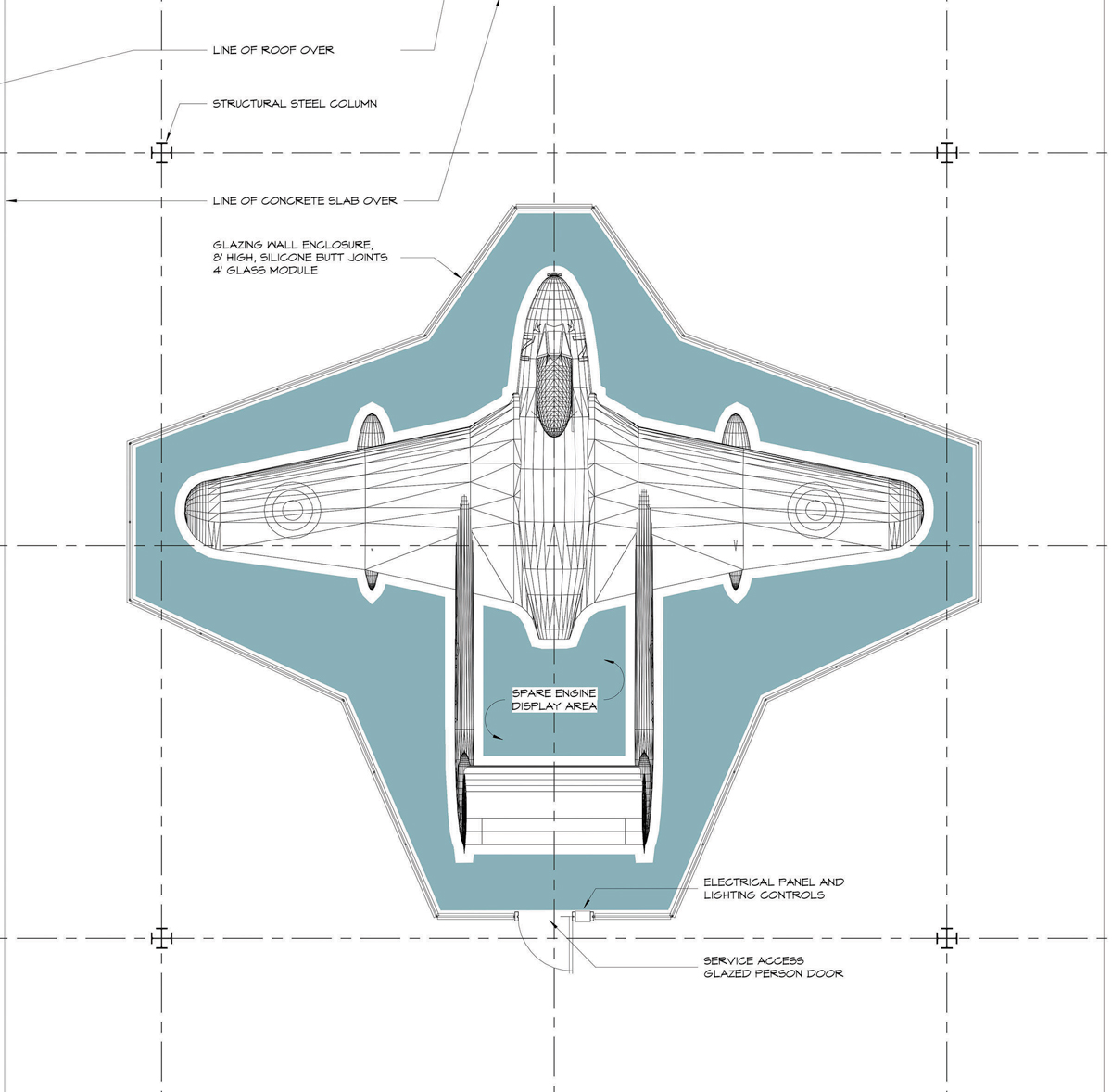Vampire undercover
By Lookout Production on May 05, 2022 with Comments 0
Peter Mallett
Staff Writer
—
Aviation history will soar to new heights when the Comox Air Force Museum places its prized De Havilland Vampire Mark III fighter jet under a glass protective display structure.
To do this, they need $1.5 million in donations to build a pavilion in the museum’s Heritage Air Park, hopefully in time for the Royal Canadian Air Force (RCAF) 100 anniversary in 2024.
Acting Deputy Wing Commander, Major Niomi Caldwell is representing the campaign and says the pavilion is essential because the Vampire’s wooden construction makes it fragile to the outside elements. It is currently housed in a hangar, away from public viewing.
“There is a protective metal skin on the outside, but its inner structural workings are partially constructed from wood, which is incredible,” she says. “It’s a fascinating piece of aviation history that most people don’t know about or know we have at the Wing.”
Initially named the Spider Crab, the Vampire is one of 86 aircraft manufactured by De Havilland for the RCAF, with the first aircraft arriving in 1948 and put into service as a Central Flying School training aircraft at RCAF Station Trenton.
By 1958, it was phased out with newer jets, the F-86 Sabres.
The museum’s Vampire is one of a few remaining vintage aircraft.
The jet, tail number 17031, was obtained through a National Defence Headquarters approved trade in 2000. It was previously owned by a private collector in the United States who flew it in air shows. It was declared an artefact by the RCAF in 2001.
A local legend
The plane and its legacy also have a special significance for CFB Comox and Comox community as Second World War fighter pilot and Comox resident James ‘Stocky’ Edwards once piloted the Vampire in the years after the war.
Edwards will celebrate his 101st birthday on June 21.
Maj Caldwell says the former flying ace is a beloved member of the community and excited about the museum’s plans for the plane.
Two of the project’s biggest supporters are 19 Wing Honorary Colonel Robert Quartermain and previous 407 Squadron Honorary Colonel Dave Mellin, a community leader and former local businessman. Mellin says the aviation industry and the historic legacy of the RCAF is vitally important to the Comox Valley and its residents.
“This is a piece of military history that must be preserved and so many people I have spoken with are on board with that,” he says. “Many people want to see this project succeed, but it is going to take a sum of money to see it through.”
Many local businesses and construction contractors have already agreed to donate expertise, labour, and reduced costs on materials to the project.
The pavilion roof held by four corner pillars will keep visitors dry from the elements and shaded from the sun, while a large contoured glass enclosure will contain the Vampire and offer a close-up 360 degree view of the aircraft. A small section of glass will be inscribed with donor names who contributed $5,000 or more.
The Comox Air Force Museum and Heritage Air Park was founded in 1982 and commemorates 19 Wing’s role and history in West Coast aviation.
The fundraiser kicked off in April and has already raised $250,000 or 15 per cent of the fundraising goal.
For more information about the fundraiser and how to donate visit comoxairforcemuseum.ca/vampire-pavilion
Filed Under: Top Stories
About the Author:








